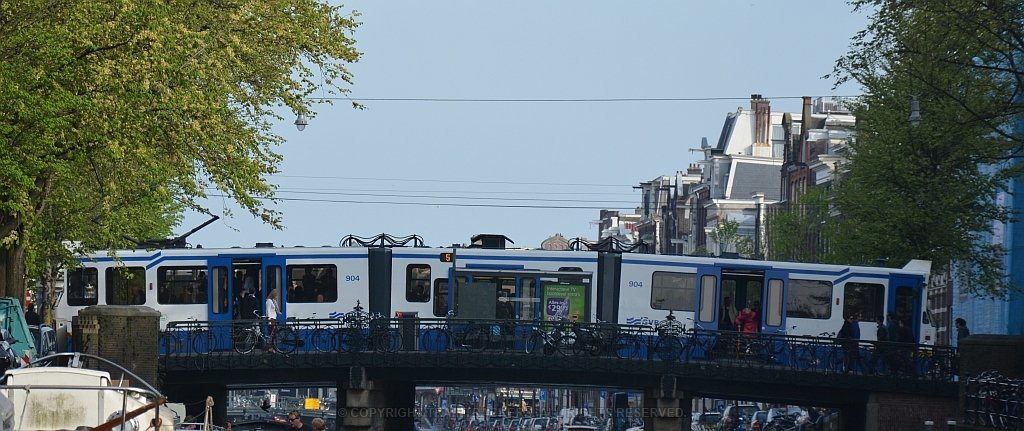
The Amsterdam Tram network started its operations in 1875 with horse driven carriages first between Plantage & the Leidseplein. The horse-driven trams carried out till 1906 linking all neighborhoods inside the Singelgracht, Vondelstraat, Overtoom, Willemsparkweg, Amsteldijk, Linnaeusstraat, Weesperzijde, Bilderdijkstraat and Ceintuurbaan.. Since 1900 the network gradually started getting electrified at 600V DC collected through cantenaries. The local municipal public transport operator GVB, which also runs the Amsterdam metro, city bus and ferry services aquired the Amsterdam Tram network in 1943. The trams on the network run on standard gauge track. In the last quarter of the 19th century, horse trams ran through as many as 15 routes in & around Amsterdam. Some of the routes of the original horse-tram lines can still clearly be recognised in the present day tram routes 1, 2, 3, 4, 7, 9, 10 & 13. Between 1900 and 1906, all of the existing tram lines were electrified except route-12 which was later electrified in 1916. By 1930s the total number of routes grew to 25. Between 1900 and 1930, the fleet grew to 445 motorised trams & around 350 trailers - all twin axle vehicles with wooden bodies. But during Great Depression post 1930 the tram service was reduced which faces further crisis in 1944 due to acute shortage of coal and apparently whole system was shut down.
In the picture a Bombardier make 900 series unidirectional tramcar can be seen over a canal bridge waiting for passengers. It is one of Amsterdam's first low-floor trams built in 1989. Photographed by Bani Das & Asit Baran Das on 10th May 2015.


